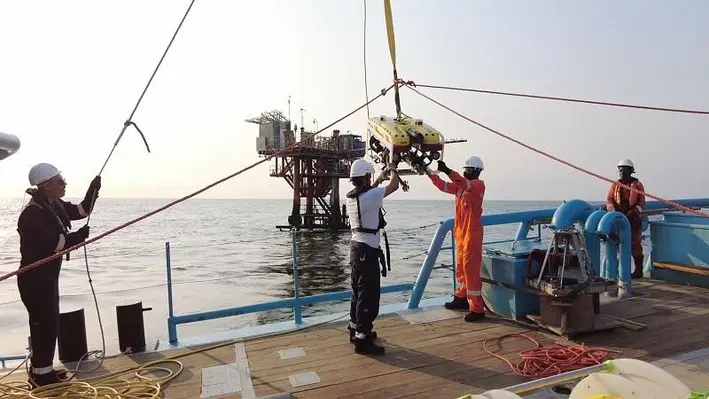

Environment Quality Services (EQS) has successfully assisted in a decommissioning project offshore Angola. Dubai-based EQS deployed their Saab Seaeye Falcon to assess the integrity of the offshore structures via visual inspection and image gathering.
Carlos Rodrigues, CTO, of EQS, commented, The Falcon supports EQS in their aim to fulfil specific works in a safe and cost-effective manner by delivering accurate and relevant information.”
Rodrigues said that the Falcon is an ideal resource for specialist work as it can handle an array of cameras, sensors, tooling and complex data gathering systems that can easily be added or changed thanks to the Falcon iCON intelligent module- focused distributed control architecture.
The Falcon is the top selling robot of its class and its success is attributed to it being a portable, metre-sized, intelligent, powerful highly mahneuverable, easy-to-use vehicle with a depth rated range to 1,000 metres.
It has a reliability record covering more than one million hours underwater, including deep tunnel work. The Falcon can remain stable in turbulent waters and strong currents whilst undertaking both robust and precision tasks.
The structures inspected on the platform offshore Angola included the platform (jacket), well head, protection dome, pipelines and umbilical. EQS helped the offshore energy clients navigate the complex environmental regulatory landscape to achieve compliance as well.
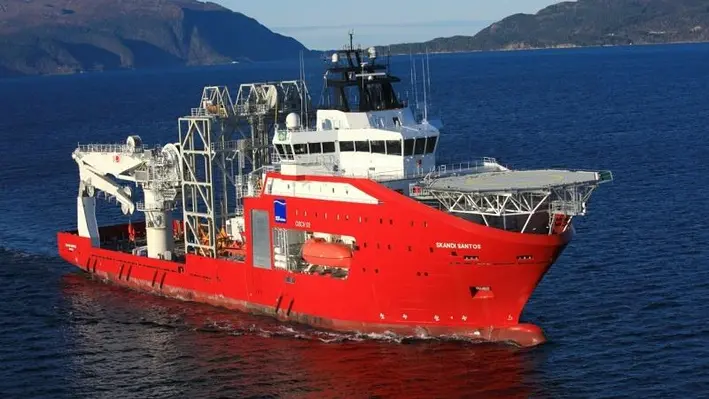

AKOFS Offshore has signed a three- year contract with Petróleo Brasileiro S.A. (Petrobras) for a broad scope of subsea services in Brazil.
The work will be performed by its Skandi Santos vessel which is designed to install and retrieve subsea trees and modules, including subsea structures and manifolds at water depths of up to 2,500 metres.
Currently, the vessel is completing its current contract with Petrobras which began on 1 March 2010.
The services for this contract will commence in Q4 20220. The total contract calue is about US$107mn. AKOFS Offshore will be performing the operations with its partners Bravente for marine services and IKM Subsea for ROV services.
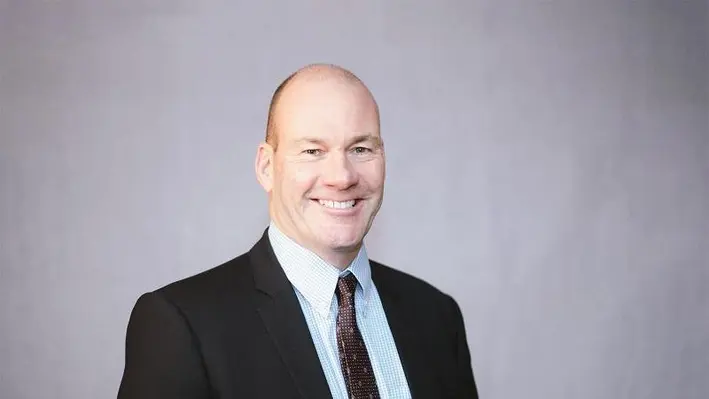

Tony Branch, a former President of Weatherford’s Regional Operations, will lead Westerton Access, an industry leader and technical innovator in the provision of subsea and topside inspection solutions, and the recently-launched Westerton SplashZone Integrity Specialists (WSIS), a company specifically formed to tackle the highly corrosive and problematic area immediately above and below the water line.
The companies are part of the wider Westerton portfolio, which includes Westerton’s fishing and intervention service.
Robin Porter, Founder of Westerton, said, “We are pleased to have Tony on board, and look forward to working with him. He is experienced in executive leadership roles and has led companies through transitional periods, including the launch of new product lines, so his skillset is well-suited to the newly structured Westerton group of companies.
“He has a proven track record in merging different operations into one cohesive team and I am excited at the prospect of increased growth and collaboration we will see across our specialist companies.”
Branch, who has more than 30 years worth of experience in the industry, commented, “I am excited to be joining a talented, dynamic and client focused team with a strong technical offering. The business has a strong foundation, and I am looking forward to working with the team to help deliver results for our valued clients.
“Building on our recent and successful expansion into the Middle East, we have further growth aspirations, both in terms of geography and the size of the organisation, and I look forward to playing a part in that, along with the rest of the team. Our Access and WSIS services both solve significant problems, not only in our traditional industry of oil and gas, but also in other sectors such as offshore wind."
Branch added, "All structures that are in the ocean are subject to harsh operating conditions and need to be inspected and repaired, regardless of whether they are oil and gas platforms or a wind farm. These assets need to be inspected quickly, efficiently and more cost effectively than traditional vessel-based services currently offer, and with the skills, technology and experience we possess, that is something we are more than capable of doing, saving operators money.”
The appointment of Branch comes after the company has expanded its footprint in the Middle East with new offices in Dubai.
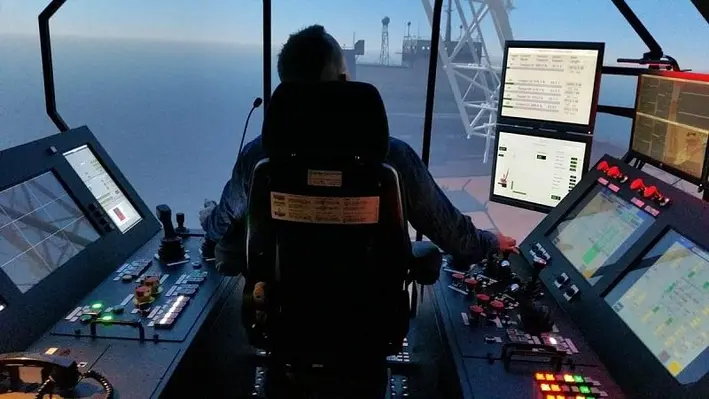

Kongsberg Digital has confirmed that Heerema Marine Contractors (HMC) has renewed its Long-Term System Support Program (LTSSP) contract with the company for another five years.
The LTSSP is in support of a K-Sim Offshore Crane simulation system, which features digital twins of HMC’s semi-submersible construction vessels, ships and barges.
Renewal of the LTSSP ensures Kongsberg Digital’s continued commitment to maintaining Heerema’s simulators at the leading edge of available technology. Installed in 2015 as one of the world’s most advanced offshore heavy lift crane simulators, its usage ranges from confirming feasibility of new methods and equipment to optimising efficiency and safety performance for current execution methods.
“By renewing this LTSSP we are ensuring that our clients, offshore crew and project teams continue to benefit from the most advanced simulation-based training and project preparation on the market, simulating real-world scenarios,” commented Jan Pieter de Vries, Manager Simulations and Visual Products, HMC Academy. “Kongsberg Digital have proved a competent partner, working in close collaboration with the team here at HMC to ensure that training and simulation needs are met. We are pleased to confirm our ongoing relationship.”
Heerema’s simulator platform was developed specifically by Kongsberg Digital to meet Heerema’s requirements as a leading marine contractor in offshore renewables and oil and gas, specialising in transporting, commissioning, and decommissioning offshore facilities.
The Simulation Centre is a real-time offshore environment where offshore crew and project teams examine all project aspects and associated risks. It includes two offshore crane operator domes and a bridge with K-Sim DP simulator, based on the same Kongsberg Maritime K-Pos DP systems used on HMC’s vessels. Detailed models of Heerema’s SSCVs, Heavy Lift Vessel, tugs and barges ensure realistic scenarios and enable detailed pre-mission training for heavy-lift projects.
“HMC’s renewal of this LTSSP is a clear endorsement of the capability and longevity of our maritime simulation solutions,” remarked Andreas Jagtøyen, Executive Vice President Digital Ocean, Kongsberg Digital. “Our commitment to supporting the maritime industry is not limited to providing the best technology, but also extends to ensuring that our customers gain value from their investment for years to come, through long product lifecycles and extensive service, provided by our 24/7 support network. Our LTSSP programme elevates our relationship with our customers beyond just being a vendor to rather act a trusted partner.”
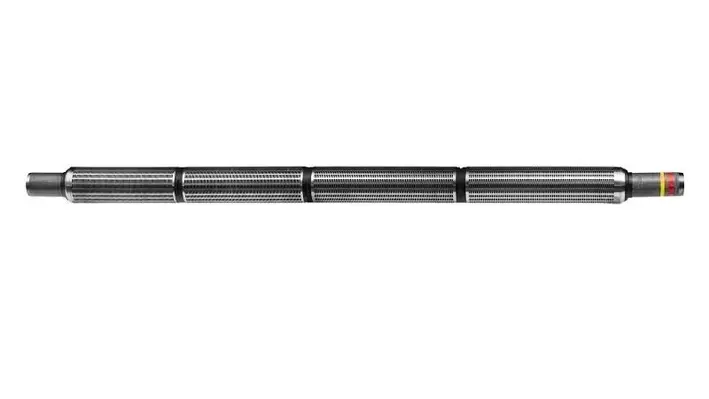
 Presenting at the Offshore Well Intervention West Africa 2021 virtual conference, Bhargava Ram Gundemoni, 3M Global Solutions Specialist, explained how better sand control can lead to better productivity and profitability.
Presenting at the Offshore Well Intervention West Africa 2021 virtual conference, Bhargava Ram Gundemoni, 3M Global Solutions Specialist, explained how better sand control can lead to better productivity and profitability.
Traditional practices used for the sand control selection (SCS) process are based on mature technologies and methodologies that fail to meet the key performance drivers. The metallic filter media has erosion limits that constrict the boundary condition of the traditional SCS practices which result in failing to meet the asset productivity demand and the performance drivers not being achieved in many cases.
An alternative to the traditional sand control approach
The solution is a change of metallic filter media to ceramic filter media of the screen. 3M’s solution is achieved by integrating a full-body ceramic part in the form of rings on a pre-perforated base pipe on to which ceramic rings are stacked and held with two end caps and with an external shroud on top. The stack of ceramic rings creates a slot opening which is designed for the application spec-in. The ceramic material at the inflow offers higher erosion resistance, therefore mitigating hotspotting potential. This allows the operator a wider operating window of productivity.
Erosion constraint on the metallic filter media limits the well operating limits, limiting the productivity potential and the application envelope of applying a standalone screen system.
Using a ceramic filter media operators have proven in green fields and brown fields to shift the boundary conditions of applying stand-alone screens as demonstrated in the below picture, and achieved reduced risk to erosion failure and increase productivity. 3M Ceramic Sand Screens offers operational simplicity, reduced HSE risk to unlock production potential with faster return on investment by enabling standalone screen deployment as a simple sand control tool to address in a wider range of reservoir conditions
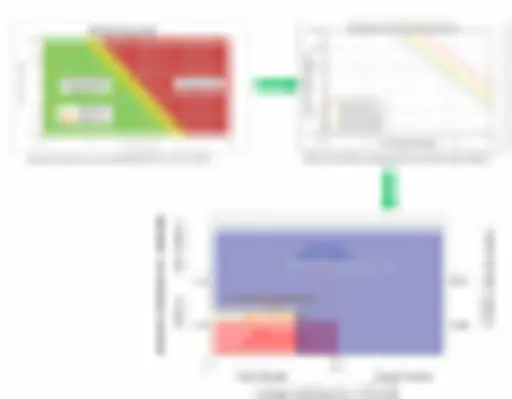
Standardised field-wide approach
Ceramic Sand Screens unlocks the operator methodology to achieve a simplified and standardised sand control approach in wide range of reservoir conditions and well architecture as downhole sand control system in OH, cased hole on a rig or through tubing rigless applications. Ceramic Sand Screens have been deployed and delivered success in 120+ applications with homogenous, heterogeneous, well-sorted to poorly sorted, low to high fines reservoir of sand properties.
To emphasis the effectiveness of the solution Ram presented three case studies from different regions across the globe.
Remedial sand control in a subsea re-perforated well intervention vessel in the North Sea
Customer challenge: The oil well was not operational due to depletion with a gas cap identified shallower to main zone. The operator intended to cost-effectively exploit the gas cap using rigless deployment method to add additional revenue from the existing asset. The project also needed to run a stand-alone sand screen in the open sea and through a subsea lubricator and required sub-sea well (deviated) intervention in harsh deployment conditions. The well downhole environment was extremely erosional and a reliable, robust solution was required to prevent failure at a reasonable cost.
Solution: The operator opted for ceramic sand screen deployment on a light well intervention vessel and run the screen through an e-line wireline system with an expandable packer system through open sea into the sub-sea lubricator.
Results and value creation: The operator was able to achieve production rates of 45 MMSCFD of gas sand-free through the solution. The 3M ceramic sand screen for this project was deployed successfully in April 2016 and was replicated in other wells with the same scope of work.
Marginal gas fields in Indonesia with ceramic sand screens
Customer challenge: The operator had to deal with marginal reserves with stacked reservoirs and was a low-cost environment. High flux velocity expected at sand face due to shallow and low-pressure, short intervals and needed robust and rigless deployable solution to achieve economical sense with heterogenous sand properties being a challenge.
Solution: High erosion and hot spotting resistant ceramic screens enable the operator to set across the perforation zone which are deployed on slickline with one or two pup joints depending on the perforation length.
Value creation: The operator achieved cost savings of up to 70% compared to the previous sand control approach and was able to increase reservoir deliverability by more than 200% of the average cumulative gas produced. The operator can now complete more zones per year and achieving a sand-free higher cumulative production volume, extending as a standardised approach to multiple assets as a primary sand control method.
Ceramic sand screens in high rate oil wells in Azerbaijan
Customer challenge: The operator had no sand control in place. With reservoir maturing and downhole conditions changed over time, sand production increased to a level where production targets are not achieved leading to well shut-in to integrate downhole sand control. Key challenges in selection of sand control are achieving cost-effective sand control approach without needing a rig in well conditions of high Fines, poorly distributed reservoir sand PSD with fluid flow at high flux and impingement velocity
Solution: 3M ceramic sand screens length of 203 ft, were set across 9 ⅝ inch casing perforation using coil tubing deployment method.
Value creation: The operator achieved ROI within five days based on the current oil price and was able to clock a sand-free production rate of 8000 BOPD and 46 MMSCFD gas. The operator also recorded a production gain of 2500 BOPD sand-free. Significant improvement on the PI over time exceeding the expectation of a standalone screen in such reservoir sand distribution with a low cost of deployment at reduced carbon footprint installing sand control mitigating need of a rig.
Solutions to maximise profitability
As of Oct 31 2021, 3M has completed 125 installations for sand control with users consisting of 50% oil producers and 50% gas producers. For general intervention applications 3M has maintained a manufacturing time of 6-12 weeks with variables such as size, quantity and shipping time to location.
3M remarked that the solution can help operators meet future energy policies to reduce carbon intensity for deployment with rigless approach where feasible and reduce the sand control future repairs offering a robust solution. The simple stand-alone screen and faster deployment means reducing HSE, operational risk and mean time between failures.
3M added, “There are a lot of wells globally where operators can unlock production potential from their shut-in wells due to failed primary sand control or from thin-bed reservoirs or reservoirs which have not been exploited because they are deemed un-economic and left behind the casing. 3M’s ceramic sand-screens enables an operator to approach such cases using a rig-less method, without the removal of tubing and requirement of a complex rig sand control solution. 3M has proven this at multiple fields and assets globally.”
With a field track record of 125 successful application, operators in West Africa can find proven results from similar conditions to their reservoirs as reference case study.
To learn more about Ceramic Sand Screens, visit: https://www.3m.com/3M/en_US/oil-and-gas-us/ceramic-sand-screens/
If interested in such a simplified solution to unlock the production potential assets by addressing sand control challenges, contact Bhargava Ram Gundemoni:
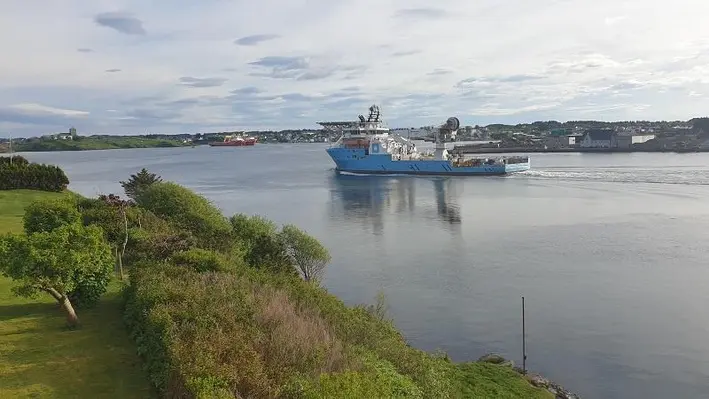

Neptune Energy has awarded a decommissioning contract to Maersk Supply Service (MSS) for the Juliet field in the UK southern North Sea.
The decommissioning work, which will be carried out in early 2022, will utilise innovative technology to reduce the time and costs associated with the removal of the subsea infrastructure.
Piping spools and umbilicals will be removed using the Utility ROV Services system (UTROV), a remotely operated tool carrier equipped with multiple attachments for the recovery of subsea equipment, reducing the necessity for multiple vessels and equipment providers to carry out the complex work.
The UTROV system was previously used for work on the Juliet field in 2019 and will be deployed from the Maersk Forza Subsea Support Vessel.
Neptune Energy’s UK Managing Director, Alexandra Thomas, commented, “Work on decommissioning Juliet is progressing well and the activities undertaken by MSS will finalise the work on the pipelines and enable us to move forward with plugging and abandonment operations.
“The use of such innovative technologies is enabling operators to reduce the time, costs and environmental impacts associated with such operations, and ensures the safe and efficient removal of decommissioned subsea infrastructure.”
Olivier Trouvé, Maersk Supply Service’s Head of Integrated Solutions, remarked, “We are looking forward to mobilising our engineering capabilities and specialised assets to provide safe and efficient operations.”
The Juliet subsea assets were installed in 2013. Production ceased in 2017 and formal cessation of production was approved in December 2018 by the OGA. The Juliet facilities comprise two subsea wells tied back to the Pickerill ‘A’ Platform, which is owned and operated by Perenco (PUK).
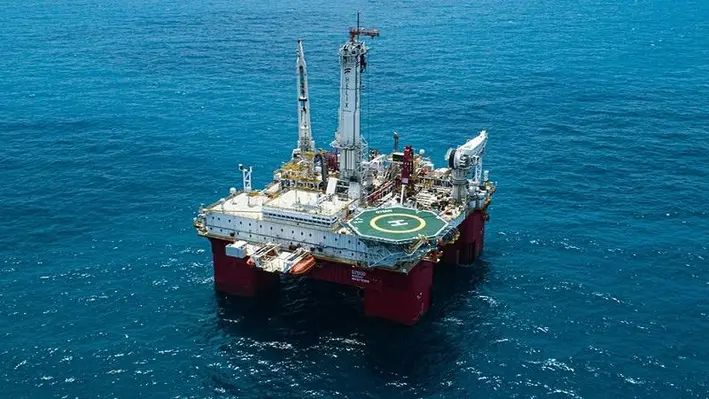

Neil Greig, Sales Manager Helix well Ops (UK) Ltd, presented at the Offshore Well Intervention Mediterranean 2021 conference to highlight the capabilities of the Subsea Services Alliance and how these could be utilised in the Mediterranean.
Greig started the session by giving a detailed explanation on how intervention operations are performed from riser based vessels using dynamic positioning before adding that Helix has various intervention assets around the world capable of performing such work.
In areas such as the Gulf of Mexico the company tends to have heavier assets whereas closer to the Mediterranean in the North Sea the backbone of the fleet is made up of Light Well Intervention (LWI) vessels. These include:
Seawell ‒ A pioneered LWI vessel which provides platform for open water interventions, hydraulic, DSV and P&A services and is perfectly suited to pre-abandonment activities on old, weak well systems that require divers with the benefit of being agile in the field.
Well Enhancer ‒ Primarily an LWI and DSV asset but it is also the world’s first monohull vessel capable of coiled tubing intervention and, to date, has completed six successful campaigns with more planned.
Both vessels can perform LWI and DSV activities simultaneously bringing safety and efficiency as well as commercial advantages.
In terms of riser-based assets, Helix has a capable fleet made up of the Q4000, Q5000, Q7000, Siem Helix 1 and Siem Helix 2.
With the help of these vessels, Greig continued, Helix is able to perform operations on the full lifecycle of a field although the majority of their work is carried out in mid to later term life. They ensure maximum output of a reservoir throughout its life while avoiding damage. There is also opportunity to maximise the output of a well in ultra late life in order to offset decommissioning costs.
On the Mediterranean, Greig remarked that access to LWI in the region has been limited over the years whereas in the Gulf of Mexico, UK, Africa and Brazil there is always access to two-three LWI vessels at any one time.
Greig said, “When you want to start transporting assets to where there are not permanent vessels, this is where collaboration comes in. It is important for everyone to collaborate to make an agreement viable and get the asset in the region – you need all countries and operators to come together to create enough work. This happened in Africa and now we have some vessels down there which have scheduled work for the next few years. Once you start, there is every likelihood the work can be kept going.”
An example of excellence in Africa
Helix’s newest vessel, the Q7000, has continued its impressive streak of successful operations in West Africa where it has performed a variety of scopes including data acquisition, water shutoffs, milling, flaring, and more. It has already covered the majority of types of activities the company is looking to do with her.
Going through its advantages, Greig noted that being a DP asset it can transition at 10-11 knots (providing a significant ability to position itself without anchor handlers); its IRS single deployment means that hole trips are completed in hours not days; the Intervention Tension Frame (provided by Osbit) provides a safe working environment from which coiled tubing and wireline operations can be conducted; and the crew size has been reduced by 11 for coiled tubing and wireline and slickline operations.
Solving any problem
Greig remarked that throughout its history Helix has encountered every worst-case scenario that can be imagined and has used the full suite of tools to navigate them. Helix has, to date, performed more than 128 tree recoveries just from the UK and has conducted plug and abandonment on 155 suspended E&A wells. It has now worked on more than 1500 wells, including recently hitting 1000 wells in the UK as of August 2021.
Greig finished by noting that they have no intention of letting up but want to continue their expansion including into other parts of the Mediterranean. “There is an opportunity in the Mediterranean; it is just a case of starting the dialogue.”
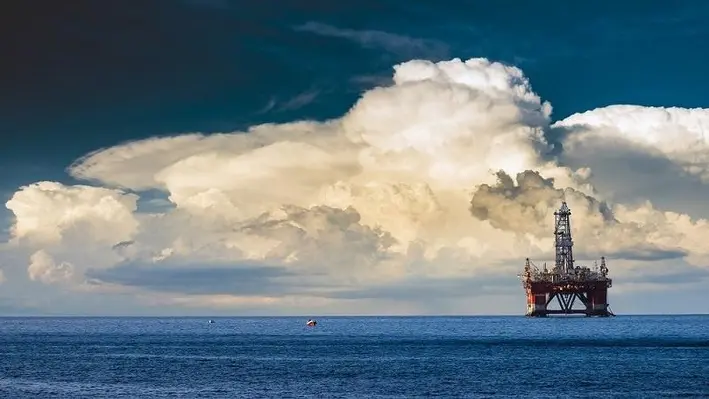

The Decommissioning Insight 2021, published by OGUK, will set out plants for what could be the biggest marine removal programmes ever attempted.
OGUK has suggested that an estimated 1.2 million tonnes of disused oil and gas installations (ranging from massive rigs to well heads sitting on the seabed) are to be brought to shore for reuse, recycling and disposal in the coming decade. The report indicates that operators will spend an estimated UK£16.6bn on the decommissioning programme which will support thousands of jobs both fiercely and in the supply chain.
Around 95% of offshore material is typically already recycled but now the focus is moving more towards reuse ‒ where component parts, or even whole structures, can be redeployed for new purposes with minimal modifications.
Another key aim of the programme is to establish the UK as a centre of excellence for decommissioning which will set British companies and workers in high demand. Across 2020 and 2021, 234 wells, 21 platforms and 50,000 tonnes of other underwater structures were removed around the UK, highlighting the resilience of the industry even during the pandemic.
Joe Leask, OGUK’s Decommissioning Manager, commented, “Decommissioning is more than a great challenge. It’s also a huge opportunity for UK companies to show their engineering skills, powers of innovation and ability to compete on a global scale.
“OGUK’s 2021 Decommissioning Insight report shows that over the last five years the UK decommissioning industry has improved its efficiency and cut its costs by an estimated 23%. So, we have done better but I think we can still do a lot more. If operators work together to create larger projects where we get economies of scale, then we can safely drive costs down even more.
“Decommissioning is also a key part of the UK’s transition to low-carbon energy and its aim of reaching net zero by 2050. This is partly because the installations being removed tend to be older and so generate more emissions relative to the oil and gas they produce. But it is also because of the growing opportunities for reuse, repurposing and recycling. This is already becoming common with forgings, pipeline valves, turbines and electrical kit. In the future some assets could be repurposed for new uses such as offshore wind and permanent storage of carbon dioxide by pumping it deep under the seabed.”
“This is going to be an exciting ten years – there’s a huge amount of work to be done and with £16.6 billion to be spent, there will be many opportunities for UK companies and workers,” Leask concluded.
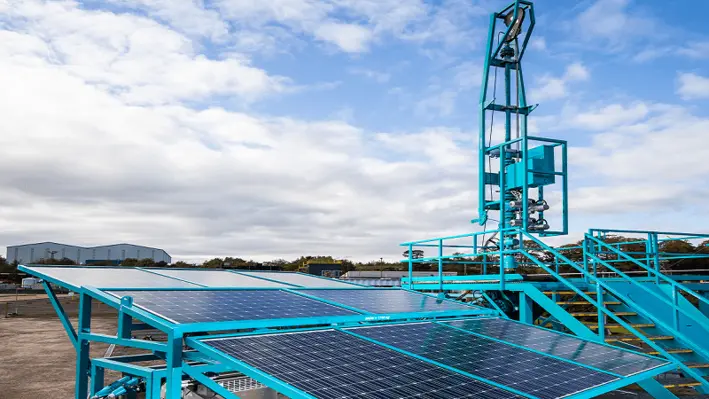

Expro has launched Galea, the world’s first fully autonomous well intervention system, designed to maximise production while reducing intervention costs, HSE risks and environmental impact.
Galea replaces larger, conventional and more labor-intensive wireline rig-ups for a range of slickline operations such as solids removal, plug setting/pulling and logging surveys. It can be configured in a variety of operating modes to suit a range of applications onshore and offshore.
Max Tseplic, Expro’s Vice-President of Well Intervention, explained, “Galea maximises production while reducing operational overheads by using an intelligent, autonomous system to perform a variety of slickline operations.
“Frequent, routine interventions typically involve significant manpower and equipment, which are costly. Planning these operations is often restricted by the availability of hardware and crew. The environmental impact of regular interventions, and the movement of vehicles and equipment, are also significant, as is the HSE risk to crew in travelling to and from well sites and performing operations.
“Galea eliminates these challenges by removing the movement of people and equipment to the well site for each intervention. Remote control and 24/7 monitoring reduce HSE risk and allow production to continue in inaccessible areas. The reduced environmental impact of using Galea helps asset managers comply with environmental regulations.”
In fully autonomous mode, Galea deploys a tool string into the well either at regular intervals or as defined by the well conditions. In semi-autonomous mode, Galea performs a pre-programmed intervention sequence, initiated locally or remotely. A small, self-contained intervention package permanently located at the well site eliminates the need for a wireline unit or truck.
In manual mode, Galea enables quick rig-up intervention compared to conventional operations. When not in use, the system occupies a fraction of the well site or deck-space required for a standard slickline winch unit and PCE package.
Galea also has several fail-safe features to ensure containment and eliminate potential wire-breaks during operations.
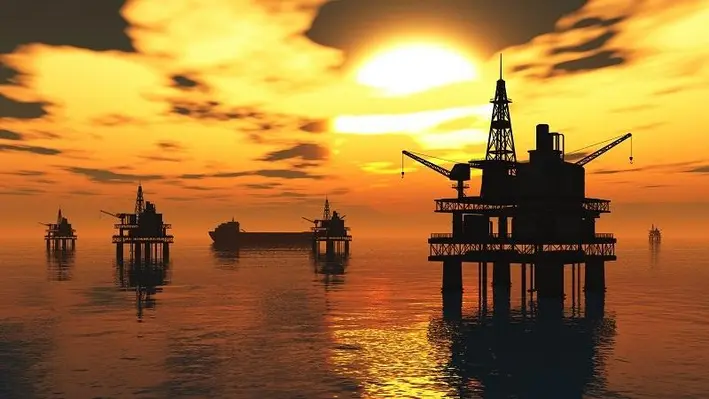
 During an introductory session on well intervention in the Mediterranean at the Offshore Well Intervention Mediterranean 2021 conference, expert panelists came together to share their thoughts, discuss the advent of technologies and explore the challenges involved.
During an introductory session on well intervention in the Mediterranean at the Offshore Well Intervention Mediterranean 2021 conference, expert panelists came together to share their thoughts, discuss the advent of technologies and explore the challenges involved.
Moderator Scott Clayson, Commercial Manager at Baker Hughes, provided an introduction to the session by commenting that the market ranges with fields from Spain to Italy with some subsea fields dating back 20+ years. There are fields off the coast of North Africa, Bulgaria and Romania which have added subsea production and, in addition, there has been an increase focus in the eastern Mediterranean where the subsea fields are around 9-10 years old. “Importantly based on some of the available data we have seen the majority of wells in the Mediterranean appear to be in peak intervention years in terms of their life cycle.”
Daniel Petrone, Life of Field Solutions Manager at OneSubsea, said that to explain the well intervention scenario in the Mediterranean region, he would have to divide it into East and West. “In the West, the arrival of well intervention in Tunisia, Algeria and Spain has been marginal. There have been some interventions in the past but in terms of well counts and offshore activities, they are marginal,” he added.
He added that one of the areas that have seen more activity in the East is Libya. “It has some offshore fields. The activity is potentially there, and geopolitically apt too. There is definitely a significant market in that country,” Petrone remarked.
Speaking about rigs, he opined that Israel and Cyprus are relatively new areas, where intervention is just starting to pick up but it is still a new market. “Egypt, which has a good number of dry tree wells, has also seen a major development from companies in subsea interventions. In terms of wells, a significant market is gathering more attention in Egypt.”
From an architecture point of view, one can find a mix of all in this area. “Dry tree wells, platforms and drilling rigs can all be found here. There is a lack of intervention vessels in the East but geographically, it is more accessible,” he added.
Agreeing to Petrone’s views, Mohammed Omar, Subsea Completions and Workover Engineer at Rashpetco, said it is indeed quite a similar situation in these areas.
Voicing her opinion on the subject, Fiona Robertson, Senior Product Manager, Systems & Technology at Baker Hughes, said, “It is interesting to hear details about well intervention in the Mediterranean by splitting them into two halves. The western Mediterranean region is perhaps more developed. However, new companies have tried their luck on the eastern side too. The West might be heading towards a lesser intervention situation and focusing more on the plug and abandonment process. The majority of vessels in the East are rigs with very few light well interventions.”
Based on his experiences with offshore wells and fields in Egypt, Abdullah Moustafa Mohamed Hegazy, Senior Production Technologist, BAPETCO, noted that the challenges that arise during recompletion include data availability and formation damages.
Robertson said, “There has definitely been a consideration for future intervention work at the initial point. When we have drilling wells in the past and we are learning as we go forward. When the Macondo disaster happened, the BOP (blowout preventer) caused so many problems and yet we use it as a primary safety device. There is a lot of well safety that also comes in to the picture.”
While speaking about planned and unplanned interventions, Petrone said, “If you have some sort of monitoring, you can foresee if things are going wrong. Then you can transform your unplanned into planned intervention.”
Technology as the key
The panelists were all on the same page regarding their opinions on technology being vital for interventions and being helpful in the future. “It is important to go digital to understand early signs of something going wrong. One can monitor if something is deteriorating,” Petrone said, while adding that it is important to anaylse data as it helps plan interventions better and time them better too. “Especially, when it comes to removing people from offshore activities, potential, and financial gain, technology comes in handy. It won’t solve intervention problems, but if you are aware early on, you can save money and time before it gets worse,” he commented.
Abdullah Moustafa added, “The reason to adopt technology should be the time factor as it can help save time. Some technologies are not available in the Mediterranean but outside the region, they are commonly used. Mechanical interventions have proven to be effective but sometimes we can’t use them, especially when they are multiple zones.”
An environmental focus
Speaking about reducing carbon emissions, Abdullah Moustafa said, “We should try to minimise the amount of hydrocarbons released. This is one thing all companies should try to achieve. All companies need to transition to green energy, even the major oil companies in Egypt.”
Elaborating solutions for the carbon footprint problem, Robertson said, “If we use more light well interventions, it will reduce the carbon footprint as there is lesser fuel used, fewer individuals on board, and the operations are quicker. If we move away from rigs that could also help us reduce our carbon footprint.”
Adding his views to the issue, Petrone said, “The footprint of an intervention is lower than drilling a well. We are looking at decarbonising operations by making more electrical equipment, diesel powered ones, by removing people from offshore projects, and less flights which means less helicopter fuel to be burnt. In addition, if interventions are planned well, they can be completed quicker and will result in a much lesser carbon footprint.”
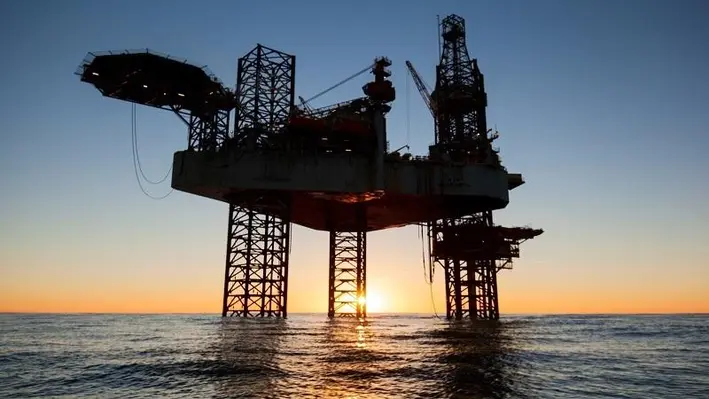

Pharos Energy plc, an independent oil and gas exploration and production company, has announced that the Hoang Long Joint Operating Company has successfully completed its 2021 TGT well intervention and development drilling campaign.
Ed Story, President and CEO of Pharos Energy, commented, "I am delighted to announce that the first phase of the infill development drilling programme in TGT has finished, with all four wells testing at rates in line with or ahead of pre-drill expectations. The campaign was completed ahead of schedule and under budget.
“The well intervention programme conducted earlier in the year also delivered rates above expectations. Together, these two operational campaigns have increased production capacity and will ultimately improve recovery from the field. They also support the further activity set out in the Full Field Development Plan designed to optimise field oil & gas recovery and a submission request for a five-year contract term extension.
The initial flow of the four development wells of 8,800 bopd exceeded the predicted combined initial oil rate of 5,650 bopd by 3,150 bopd.
Well interventions and a gas lift optimisation programme earlier in the year resulted in an initial TGT production gain of 3,200 bopd. The six wells with additional perforations showed a gain of 1,800 bopd, the four wells with water shut off gained 900 bopd and eight wells where demulsifier injection was applied gained 500 bopd.
The TGT field gross production rate on 17 November 2021 was 14,800 boepd, but would have been approximately 19,800 boepd without the impact of the compressor fault mentioned below.
The results of the drilling and intervention activity support additional opportunities as set out in the Full Field Development Plan (e.g. nine contingent wells and an extensive well intervention programme), which could support a TGT license extension request to December 2031.
The Hoang Long Operating Company Management Committee has also approved two additional TGT wells and 13 well interventions (ten firm additional perforations and three water shut-offs) in the budget for 2022 on 17 November 2021.
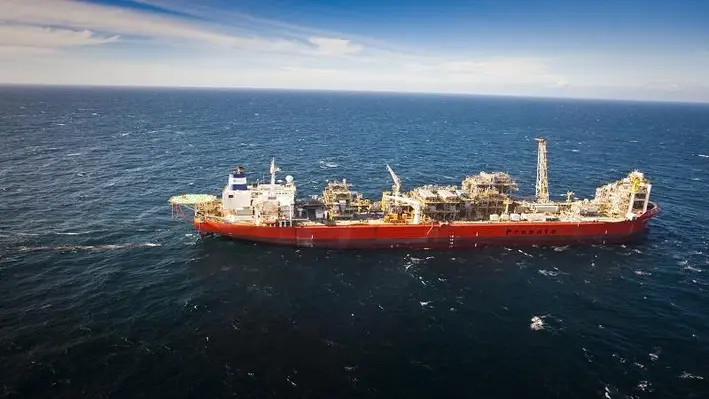

The New Zealand Ministry of Business, Innovation and Employment (MBIE) has entered into an agreement with Helix Offshore Services Limited, a subsidiary of Helix Energy Solutions Group, for the plugging and abandonment (P&A) of the wells in the Tui Oil Field.
This is part of Phase 3 of the Tui Oil Field decommissioning.
“Helix was awarded the contract after a competitive procurement process to select a supplier that met MBIE’s objectives of a robust technical solution, flexibility in timing, competitive pricing and a commitment to working with iwi and local stakeholders,” said MBIE Tui Project Director, Lloyd Williams.
“Helix is widely recognised internationally as one of the largest and most capable contractors for well intervention and abandonment, and we are looking forward to working with them to complete the final phase of the decommissioning."
“Helix’s proposed vessel to carry out the work, the Q7000, is a state-of-the-art unit which is optimised for well decommissioning and features specialised equipment required to complete the work safely and efficiently,” added Williams.
Wharehoka Wano, CEO of Te Kāhui o Taranaki Trust, remarked, “We are very pleased the project has secured a highly competent contractor for Phase 3. This gives us every confidence as Taranaki Iwi and the hapū of Ngāti Kahumate, Ngāti Tara, Ngāti Haupoto and Ngāti Tuhekerangi as kaitiaki, to fulfil and maintain our responsibility and obligation of ensuring the mouri of our environment and cultural resources are protected and enhanced for future generations.”
The disconnection and demobilisation of the FPSO Umuroa, the first phase of the decommissioning of the Tui Oil Field, was completed in May 2021. In October 2021 the contract for the second phase of the decommissioning process, the removal of the subsea infrastructure, was awarded to Shelf Subsea Services Pte Limited. It is anticipated this phase of the work will be carried out in the summer of 2021/22 or alternatively in the summer of 2022/23.
MBIE has submitted an application for marine consents with the Environmental Protection Authority (EPA) for the removal of the subsea infrastructure and the plugging and abandoning of the Tui wells. An independent board of inquiry is considering MBIE’s application.
Subject to EPA granting the marine consents, it is anticipated the plugging and abandonment work will be carried out from late 2022.
Page 87 of 110